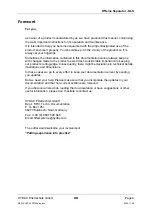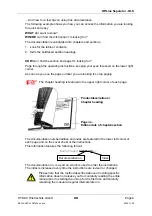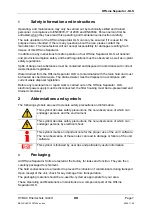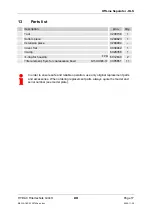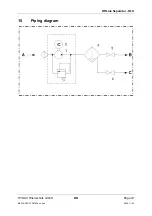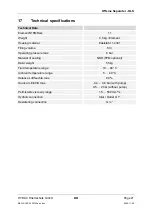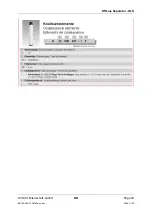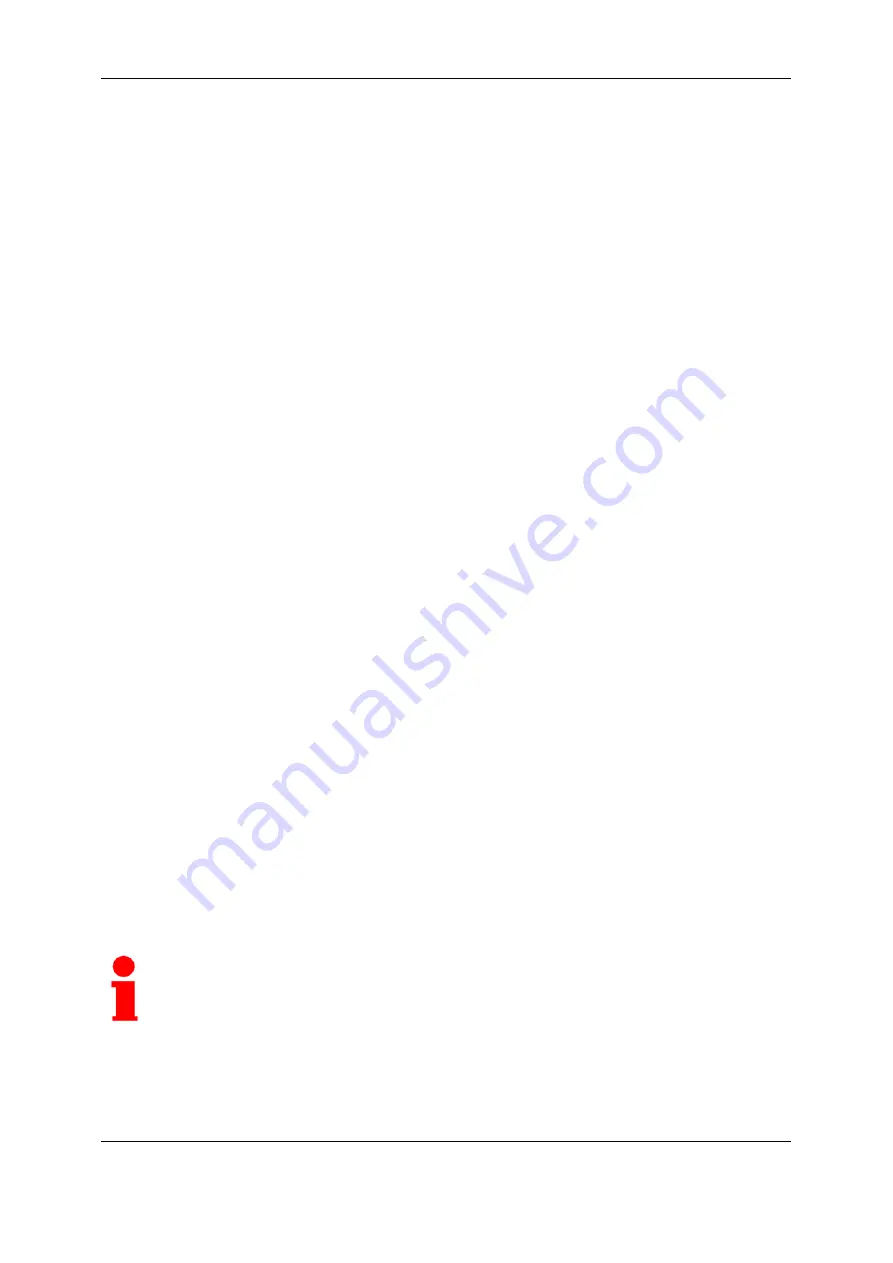
OffLine Separator - OLS
HYDAC Filtertechnik GmbH
en
Page 13
BEWA OLS 3329742a en.doc
2006-11-29
10 Operating
10.1 Working
principle
The OffLine Separator OLS are divided in two chambers by means of the sealing flange. The
upper housing, the filter chamber, contains the offline filter element where impurities are
removed from the oil. The lower housing, the separator chamber, contains spacers,
guidepipe and drip catcher filter. In the lower housing water is separated from the oil and
collected at the bottom of the housing.
The pump draw oil from the main reservoir, discharge it into the filter chamber and through
the offline filter element into the centre hole. From the centre hole the clean oil are lead down
to the separation chamber, out to the periphery of the housing and down through the
spacers, where water particles are collected to tiny drops and sticks to the surface of the
spacers. At end of the guidepipe, the oil changes direction and flows upwards and leaves the
separator chamber through the drip catcher filter.
10.2 Starting
•
Close the drain valve.
•
Install the bleed plug, but leave it open.
•
Open the shutoff valve if installed.
•
Start the pump and observe, that air is bleeded from the bleed plug.
•
Fill the housing completely, keeping the bleed port open until fluid escapes.
•
Observe that the differential pressure rises on the clogging indicator.
10.3
Running and water drainage
It is recommended to keep the OffLine Separator OLS running fulltime, even though the main
system is stopped. Hereby a high degree of purity and low degree of water content are
obtained.
If the oil is contaminated, the removed impurities will clog the offline filter element and
causing a slowly rising differential pressure. When the differential pressure rises to about 3
bar, the offline filter element must be replaced.
If water is present in the oil, the water are collected at the bottom of the separation chamber
and can be drained at the drain port. Place a bucket under the drain port outlet and carefully
open the drain valve slightly. Observe the drained fluid and leave the valve open as long as
water is drained. Close the drain valve when oil are present.
Warning:
The drained water is contaminated with the main fluid and shall be treated as
chemical waste.




